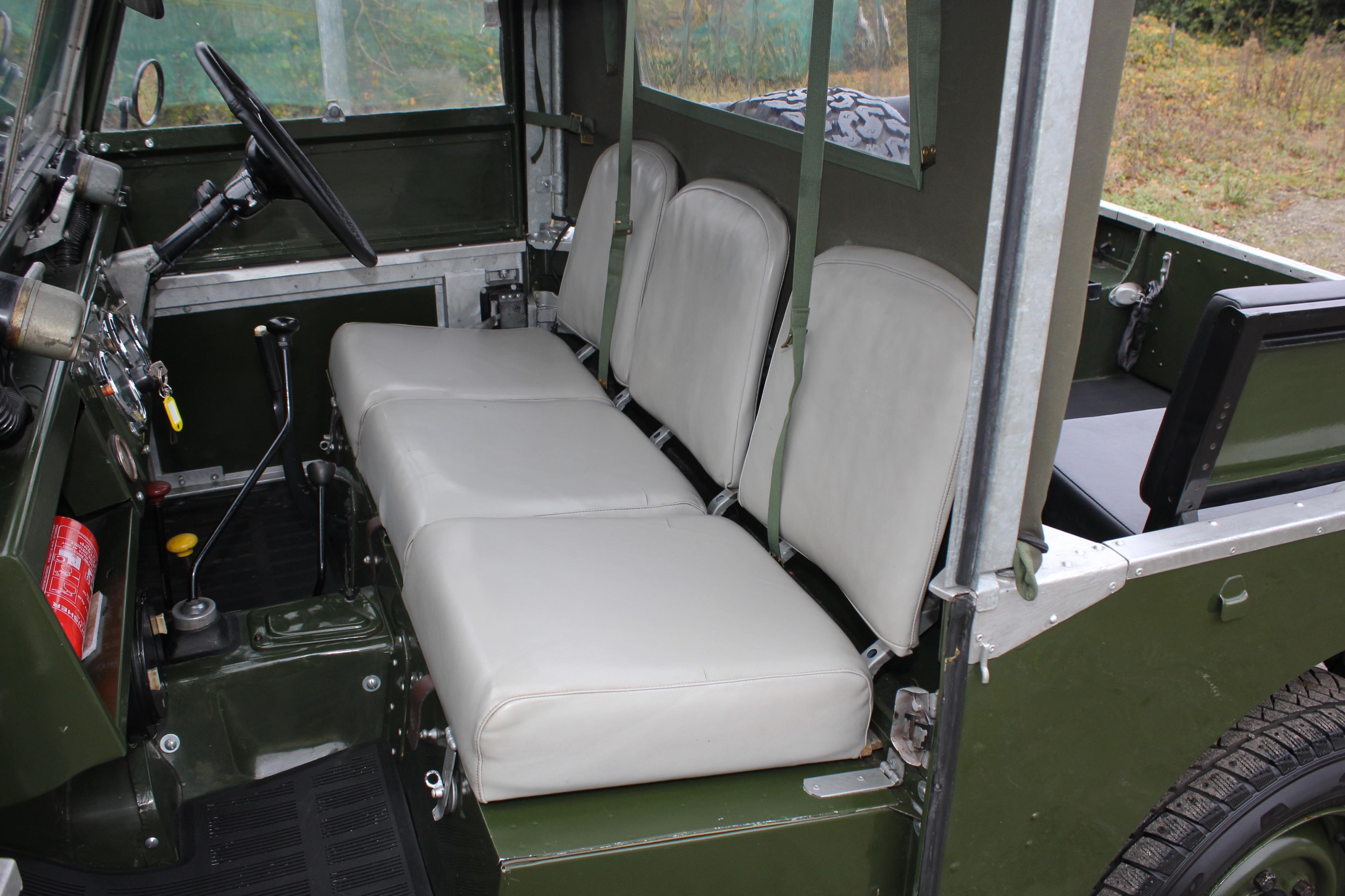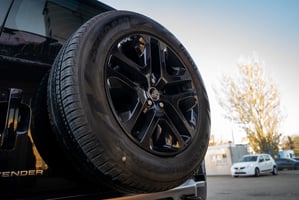If you’ve got a Defender with a winch, chances are you’re no stranger to mud, steep inclines or a...
There’s nothing quite like the inside of a rugged Defender or Series I, II or III, whether it’s the nostalgic smell that emanates when you open the door, the craftsmanship of the interior or - as we are talking about today - the upholstery. Like any car, our Defenders need regular cleaning and care to keep them looking, smelling and feeling tip-top, and often there’s a certain level of extra care that needs to be taken if it’s an older car.
Here’s how to properly care for each part of your Defender’s interior, from vacuuming tips, the products to use (or not use, in some cases!) to specific fabric cleaning information.
General upholstery care tips
All cars accumulate dirt, food and bacteria from general use - and if you drive your Defender in inclement weather, there is likely to be a fair bit of mud in the mix, too.
Regular vacuuming is the foundation of interior cleaning. Use a soft-bristled brush attachment to gently lift any dust and debris without damaging the more delicate fabrics or stitching. Don’t forget to pay attention to any crevices, the seams, and in between seat cushions. A handheld vacuum or one with adjustable suction power is probably ideal for any interiors that may have more fragile finishes.
When it comes to products, don’t use household cleaners, bleach, ammonia-based products or strong degreasers on your car’s upholstery. These can strip away any protective coatings and potentially discolour the fabric. Instead, use specialist ones that are formulated for use on cars. Also, always check that you know exactly what material you are working on - it might look like leather, but is it actually…
Try not to smoke in your Defender, and clear up any spillages of food or drink as quickly as you can. If you have any stains that you can’t shift, a professional clean might be needed.

Caring for leather
Leather is often a prominent feature in many of the models. Whilst it is relatively easy to keep clean, it does need a bit of special care to stay supple and crack-free. When cleaning it, use a pH-balanced leather cleaner and a soft microfibre cloth. Avoid saturating the leather - less is more here. Don’t use anything alcohol-based, as it dries the leather out.
After cleaning and when totally dry, apply a leather conditioner designed for car interiors. This keeps the leather moisturised and prevents it from drying out or fading. It’s easier said than done, but try to reduce UV exposure, which can fade and weaken leather over time.

Caring for fabrics and other materials
As a general rule, fabric seats require regular vacuuming and just spot cleaning, using minimal moisture to avoid soaking the underlying cushioning. Other fabrics - the hood, for example - often need the same.
Vinyl
Vinyl is durable but it can become brittle over time. Wipe it down with a vinyl-safe cleaner or a mix of warm water and a dash of mild soap if it does need a clean. Dry it with a soft, dry cloth to prevent water spots occurring, and use a vinyl protectant afterwards to prevent any cracking and fading, particularly in sun-exposed vehicles.
Nylon
Nylon is a common synthetic material found on some seats. For this, use a foam-based upholstery cleaner and gently (gently!) scrub with a soft-bristled brush and then blot with a clean towel. Always allow nylon seats to dry thoroughly to prevent mould developing, so air the Defender well afterwards.
Microsuede/Suedecloth
A more modern material in some Defenders, microsuede (polyester) mimics the feel of suede but thankfully with easier maintenance. Use a specialist microsuede cleaner or a light mixture of water and mild soap, and gently blot stains rather than scrub at them, then rinse with just water. Avoid using excessive water, which can leave marks or flatten the fibres.
Some people have remarked that it can also hold smells and moisture a bit, so regular airing is ideal.
PVC
Often, the Defender’s hood may be made from PVC. PVC is tough but, again, prone to cracking if neglected. You can use a specialist cleaner, or use warm water and a very mild detergent/soap with a soft cloth or sponge. Let it dry properly, then finish it off with a UV-resistant protectant to maintain flexibility and prevent brittleness.

Caring for carpets and mats
If you’ve got floor carpets or carpet mats, they likely endure a bit of wear, especially if you regularly drive your Defender.
Use a crevice tool on the vacuum cleaner for corners and a brush attachment for the pile. You can wash them with a dedicated carpet shampoo or foam cleaner. Avoid over-wetting, which can damage the underlay.
For rubber mats, clean these with warm soapy water, dry them thoroughly, and then treat with a rubber protectant to prevent them cracking.
Don’t forget the boot!
The boot often gets overlooked, but a tidy, well-maintained boot is important, and it can get very dirty over time if used for storing items such as wellies. Remove all the items from inside and thoroughly vacuum the boot floor and walls. For fabric linings, use a light upholstery cleaner, and for rubberised linings or mats, wash these with soapy water and allow to air dry.
It’s important to ensure the boot seal is intact and in a good condition, to avoid dampness which can in turn lead to mould developing.
Hoods
Now these need a mention! Fabric hoods can present unique challenges at times due to their exposure to the elements. Try to store your Defender with the hood on to maintain its shape and prevent creases. To clean, use a soft brush and a hood fabric cleaner. Avoid pressure washers, which can damage stitching and seals!
Canvas hoods need to be kept correctly tensioned, or they can shrink when wet, so don’t allow the hood to dry with the sides rolled up. Canvas is a traditional product made from 100% natural cotton fibre which is treated to provide protection against rot and UV damage, but it is also a good idea to apply a canvas proofer after cleaning the hood with warm water and a soft brush.
For protection, you could use a weather-resistant car cover if the car is kept outdoors.

As you can see, caring for your Defender’s upholstery isn’t just about keeping it clean - it’s about helping to preserve it and ensure its continuing longevity. If you can make it a regular thing, and use the right techniques and products, you’ll no doubt ensure your cherished car remains a beautiful, functional joy for many more years to come.




.jpg?height=200&name=shutterstock_2408094149%20(1).jpg)

